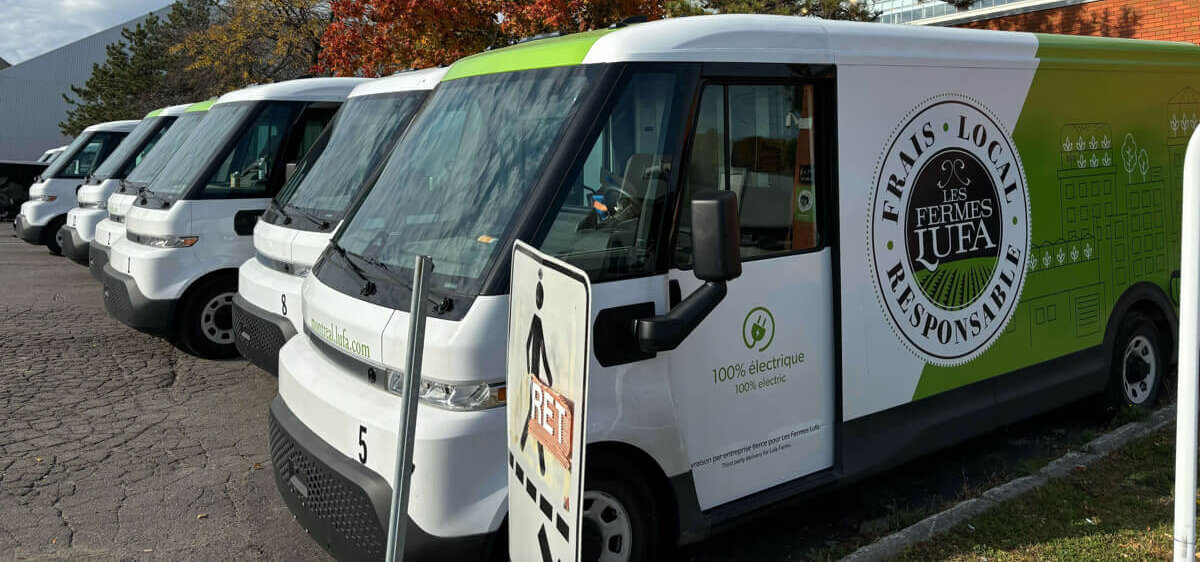Electric delivery vehicles are changing last mile logistics, from the new Amazon Rivian vans to the BrightDrop truck, to the countless other models we’re seeing on the roads. And they’re not slowing down. More fleets are switching to electric to cut costs, reduce emissions, and meet new regulations.
In fact, Global electric light-duty vehicle sales are set to reach 40% in 2030 and almost 55% in 2035, with roughly 90% of large fleet operators actively exploring electric vehicle options as a way to stay ahead of the competition.
Deloitte calls 2024 the year of the electric fleet vehicle, stating that “the transition of short haul fleets to zero emission vehicles and electric vehicles is imminent.”
While switching to electric may seem challenging, with the right support, you can easily navigate the bumps in the road. Here are five steps to help your last mile fleet make the transition to electric delivery vehicles.
Step 1: Evaluate your needs for an electric fleet transition
Switching to electric vehicles isn’t just about replacing your current trucks. It involves changes across your entire supply chain, but the benefits are worth it. So, start by gathering information about your fleet and what you need for a smooth transition.
Route and range considerations
Look at your routes, distances, and locations to help you choose the right electric vehicles for your needs. Electric last-mile delivery vans and trucks (classes 1 to 3) are ideal for the final leg of the supply chain because they can handle narrow city streets, tight parking, and stop-and-go traffic on a single charge.
Electric vehicle selection
Once you understand the ‘what’ you can focus on the ‘how.’
Your vehicle procurement strategy should fit your budget, key requirements, and electrification goals. Providers like 7Gen offer flexible options like leasing or subscriptions to make the switch even easier.
💡Tip: Get your drivers involved early in the process. This is a great way to ensure you get buy-in from your staff and ensure you’re addressing any range anxiety or charging concerns.
Maintenance considerations
Electric delivery vehicles are cheaper to operate compared to traditional trucks, with up to 20% savings in fuel and maintenance. So, while the upfront costs are currently higher for EVs (although that gap is closing!), the potential savings in maintenance are significant.
Electric vehicles have fewer moving parts, which means less can go wrong. Maintenance mostly involves checking the battery, electric motor, and electronics, which require less frequent servicing. Setting up a maintenance schedule that focuses on battery health and software updates will help keep your fleet running well.
💡Tip: EVs are heavier than current fossil fuel vehicles, so it is important to inspect tires more frequently to ensure they are still in good condition.
Step 2: Plan EV fleet charging infrastructure
Setting up EV fleet charging infrastructure is key to a successful transition. Many fleet managers underestimate the importance of reliable charging. You must plan for overnight depot charging and the flexibility for extended delivery hours.
Depot charging often is the most cost-effective solution for many fleets, and by 2030, over 60% of EV fleet managers are expected to rely on it. However, despite significant public and private investments, access to EV charging infrastructure remains limited in many areas and can put the brakes on your last mile routes if you’re not prepared.
Your fleet electrification planning must include reliable charging infrastructure for your electric delivery vehicles. Think about the best charging locations—central hubs, drivers’ homes, third-party locations, or a combination—and figure out how many charging stations you need.
7Gen simplifies charging infrastructure with one fixed monthly fee that covers everything you need to keep your fleet charged. Learn how.
Step 3: Use EV fleet management software
Using EV fleet management software helps make operations easier by keeping track of important metrics like battery health, charging schedules, and route efficiency. This gives fleet managers greater control over the entire process.
Charging software connects vehicles, chargers, and fleet management apps to ensure vehicles are fully charged when needed. It also helps reduce energy costs by adjusting power use based on demand and time-of-use rates.
With the EV fleet management software market projected to grow significantly, it shows the rising need for efficient and sustainable fleet operations.
Step 4: Gradual fleet integration
Ready to dive in…?
Replacing your entire fleet at once isn’t always practical.. Gradual integration of electric delivery vehicles might help mitigate risks and provide time to address any unforeseen challenges.
Start with a pilot program by electrifying a route with predictable mileage and reliable access to charging facilities. This approach allows you to familiarize yourself with EV logistics and evaluate how they fit into your operations before scaling up.
💡Tip: If your fleet doesn’t have a replacement cycle plan, a common rule of thumb for light-duty vehicles is to replace them every four years or when they reach 100,000 miles. Frequent repairs can make cycling out older vehicles more cost-effective by reducing both downtime and maintenance costs.
It also gives time to train drivers and staff. Drivers need to learn new driving techniques like how to make the most of regenerative braking, while fleet staff need training on charging and maintenance.
Data from the International Council on Clean Transportation shows that effective training can improve EV efficiency by up to 10%!
Step 5: Find the right providers
Transitioning to electric vehicles can be complex, which is why having a trusted partner makes a big difference.
At 7Gen, we are 100% focused on electric, bringing years of experience helping fleets switch to electric. Whether it’s evaluating your needs, planning charging, integrating software, or training your team, our end-to-end approach ensures you’re supported every step of the way.
Every fleet is unique, and we tailor our solutions to fit your needs. Let us help you make the switch, reduce risk, and get the most benefits from electric vehicles. Contact us to turn your EV roadmap into reality.

